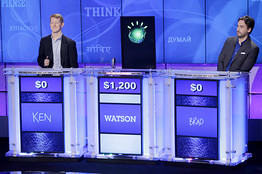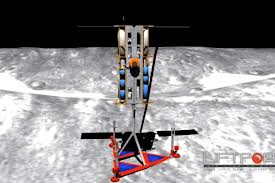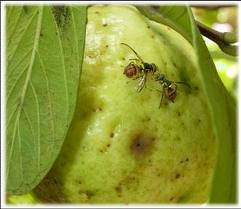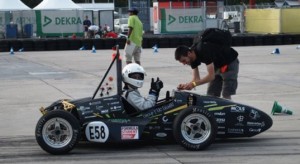Welcome to this week’s 21st Century Technology headlines. Each week I select a few interesting stories about technological innovation that can help us tackle the problems we face this century. As always I encourage you to comment, ask questions and provide input on topics I write about or feature. This week focuses on combating fruit flies using AI, using carbon credits to improve agricultural production on fragile lands, turning IBM’s Watson into a super doctor, using a 3D printer to build a race car, and a plan to construct a lunar space elevator in the next 10 years. Enjoy the read.
Agriculture Updates
Artificial Intelligence and Fruit Flies
Bactrocera dorsalis, the oriental fruit fly, not to be confused with the tiny flies we see here in North America hovering around our ripening peaches and plums, is a major agricultural pest, laying eggs in over 125 types of fruit and vegetables. A single female lives for about 90 days and can lay 1,000 eggs during that time. The larvae tunnel through fruit and then drop to the ground where they enter a pupa stage. Each new generation from egg to mature fly takes less than a month.
To combat the damage these insects do, researchers in Taiwan are using artificial intelligence to predict where and when there is an outbreak of flies. Using 240 traps to attract the flies and infrared lasers to detect the adult insect as each enters a trap, scientists receive regular data updates. When the fly count reaches 1,024 over a ten period the artificial intelligence software sets off an alert. In analyzing the data being accumulated the system is now capable of predicting outbreaks with 88% accuracy.
Carbon Farming Initiative to Save Fragile Agricultural Land
Soil security means food security and Australia has launched the Carbon Farming Initiative (CFI) to give farmers and land managers carbon credits for storing carbon or reducing greenhouse gas emissions from their operations.
Almost 1.3 billion people live in rural areas on farms that are defined as fragile. These are lands defined as sensitive to soil degradation when disturbed. Plowing that breaks the surface may lead to wind or water erosion. Deforestation by burning contributes to atmospheric CO2 and declining yields over time as the soil is quickly depleted of mineral nutrients. In low elevation areas, subsurface water may leach soils making them too salty for agricultural production. And soils in high elevations when disturbed may rapidly erode.
The CFI is a payment scheme allowing farmers to earn carbon credits. The credits can be sold to pay for carbon storing activities that lead to better agricultural production. Such activities include:
- Reduced tillage using cultivators and plows that leave 15-30% of residue from harvests on the soil surface to retain nutrients and moisture and reduce the need for fertilizers
- Drip or micro irrigation to save water by directly applying it to the roots of plants rather than over the soil surface where much of it evaporates
- Recovering landfill gas from manure and biomass for use as a fuel source rather than allowing the gas to escape into the atmosphere where it may contribute to global warming
- Reforestation of land unsuitable for agricultural production
Computer Update: Watson to Become Super Doctor
When IBM introduced Watson, its massive parallel processing intelligent computer technology to Jeopardy audiences in 2011, the computer demonstrated its ability to match and surpass human Jeopardy champions at knowing trivia. But winning a game show is not what IBM has in mind for Watson 2.0, the next generation of this technology.
IBM intends Watson to become an expert on many subjects and make its knowledge and assistance accessible on mobile smart phone systems. This means improving machine learning and adding voice and image recognition. The questions that IBM wants Watson to answer are ones that can be posed by a mobile phone user by voice. For example the user could point the smart phone camera to a rash and ask Watson to take a look and tell them what it thinks the rash may be. WellPoint Inc., a health benefits company in the U.S. hopes to use Watson this way by 2013 to assist nurses in managing treatment of complex patient cases.

Manufacturing Update: 3D Printer Goes to the Races
Use a 3D printer to build a race car. Are you kidding? Apparently not based on what a team of Belgian engineers recently accomplished with a race car called Areion. The entire vehicle body was built using 3D printing technology.
The race car, a single seater was tested thoroughly to ensure that the electronics and body could stand up to the environment including rain. The 3D shell took three weeks to construct. The car can reach speeds of 141 kilometers (88 miles) per hour. It can accelerate to 100 kilometers (62 miles) per hour in 3.2 seconds and is powered by 50-volt lithium batteries sending a charge to an 85 Kilowatt electric motor.Check out the specifications.
Space Update: A Working Space Elevator within the Next Decade?
LiftPort Group is a U.S. company that believes it can build a lunar space elevator for deployment within the next ten years. The founder of the company, Michael Laine, is a former NASA researcher. Laine states that we already have the technology in place to make such a project happen. You can watch a video that shows how the LiftPort would be built. It involves deploying a cable anchored to the surface of the Moon with the elevator extending to a platform in orbit around the Moon to ferry cargo and crews to the Moon without having to deal with the gravity well issues requiring chemical rockets and transporting of fuel. This would be the first phase in a multi-year project that would include a similar construct from the Earth to a geostationary orbiting platform above the planet. Currently the inventors are seeking capital on Kickstarter in a concerted effort to turn several years of research using tethered balloons and robot climbers as proof of concept into a first phase deployment on the lunar surface within the next ten years.

A Postscript
I’m still looking for more reader feedback and welcome your questions and comments. Readership continues to climb to well over 4,000. Thank you. You can also find us on Facebook, Google+, Twitter and StumbleUpon if you subscribe to any of these social media applications.
Once again thanks for dropping by. – Len Rosen












Love the space elevator & 3D race car alone, awesome
3D is viable for Liftport project alone.
The big benefit of a space elevator on the moon would be that you could launch a cargo shipment from Earth to the top of the elevator, and then the elevator would land it softly on the moon’s surface without the necessity of big landing thrusters and lots of fuel that would have needed to be carried all the way from Earth. Once you have a significant presence on the moon, the elevator would make it easier to launch stuff back to Earth. Now whether or not the benefit exceeds the cost is an open question.